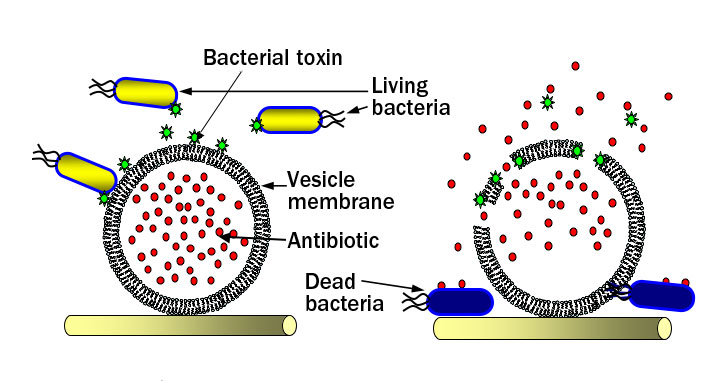Bandages that could bite back
A new material would make bacteria's attack the path to their demise.
The human body has a natural block to keep out bacteria that would cause infections: skin. But when the skin gets burned, it’s not only painful, it’s bad for the body. Burned skin cannot keep the bacteria out, so infections are common. That’s why doctors who treat burn victims have to look out for the slightest sign of dangerous infection.
Doctors often wrap burns in bandages for protection, but a recent study shows that a new kind of bandage can actually fight infection. Better yet, this new bandage can use the harmful bacteria against themselves — in other words, the infection-causing organisms cause their own deaths.
Toby Jenkins, a scientist at the University of Bath in England, worked on the study. Jenkins and his colleagues developed a material that contains tiny capsules. But these carefully designed packets aren’t what they seem: To a bacterium, these capsules look like cells just waiting to be invaded. What the little invaders don’t know, however, is that the capsules contain antibiotics, which are chemical compounds that can kill bacteria on contact.
 |
|
The wound dressings would contain tiny vesicles that, when attacked by a bacterial toxin, would release antibiotics. These antibiotics would then kill the attacking microbes, preventing the wound from becoming infected.
|
| Zhou et al./JACS 2010 |
The bacteria attack the cells by releasing toxins, or poisons. But when the bacteria attack the capsules, the capsules fight back — by releasing antibiotics that knock out any nearby bacteria.
It’s an unusual idea — using bacteria against themselves. Jenkins and the other scientists tested the material on two types of harmful bacteria. One was a type of Staphylococcus bacteria; the other was a type of Pseudomonas bacteria. When researchers placed scraps of the new material in a Petri dish with the bacteria, the bacteria barely grew at all, which is unusual.
This observation led the researchers to believe that the bacteria had attacked the fabric, and that the antibiotics had been released — which kept the bacteria from growing.
The scientists want the bandages to work specifically against dangerous bacteria, so they also tested the fabric on a harmless type of E. coli bacteria. When the scrap of fabric was placed in a Petri dish with E. coli, the bacteria grew quickly — showing that the trap didn’t fool the harmless bacteria.
The harmful bacteria probably released toxins that burst the capsules open, while the harmless E. coli left the capsules alone.
This early experiment shows that the material can selectively kill dangerous bacteria, but it’s too early to start using the material in hospitals.
“This is a nice approach and they’ve shown in principle that it works,” Christopher Batich, a biomedical engineer at the University of Florida in Gainesville, told Science News. Batich did not work on the study. While he’s excited about the results, he added that the real world is more complicated than this experiment. “You’d have to work with real bacteria and real wounds to see if it makes a difference,” he says.
Jenkins and his colleagues are back at work improving the healing fabric. In the not-so-distant future, this kind of antibacterial bandage may move from the laboratory to the hospital bed — and give burn victims a fighting chance against infection.
This story and other Science News for Kids features describing research in medicine and biology are supported with funding from The Lasker Foundation. The foundation and its programs are dedicated to the support of biomedical research toward conquering disease, improving human health and extending life.
Going Deeper:
Ehrenberg, Rachel. 2010. “Infection, kill thyself,” Science News, April 28. http://www.sciencenews.org/view/generic/id/58697/title/Infection%2C_kill_thyself
Ornes, Stephen. 2010. “The tell-tale bacteria,” Science News for Kids, April 7. http://sciencenewsforkids.org/articles/20100407/Note2.asp
Saey, Tina H. 2009. “Hitting the redo button on evolution,” Science News for Kids, February 11. http://sciencenewsforkids.org/articles/20090211/Note2.asp







